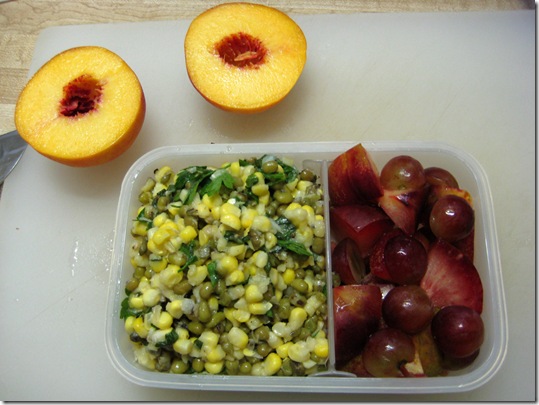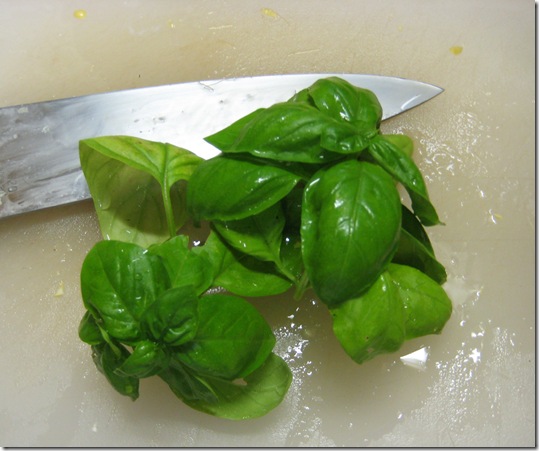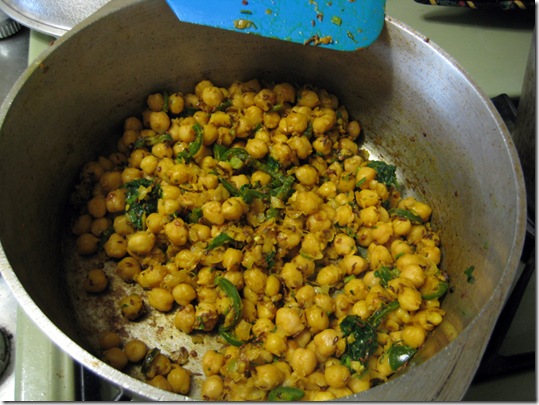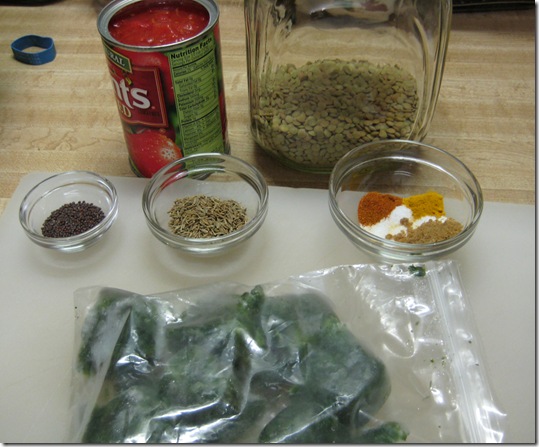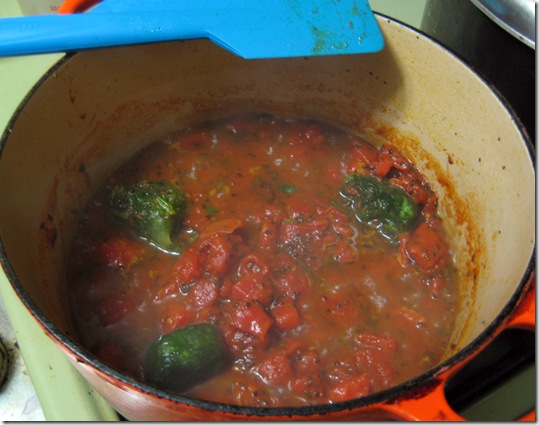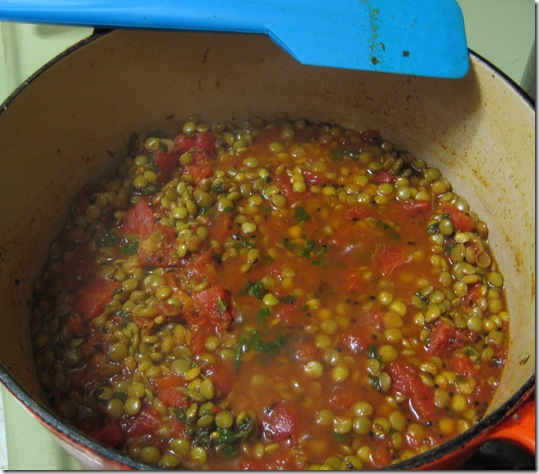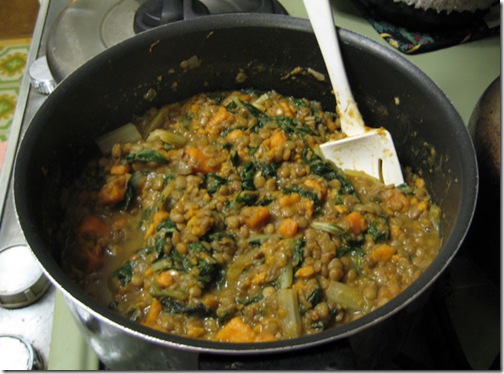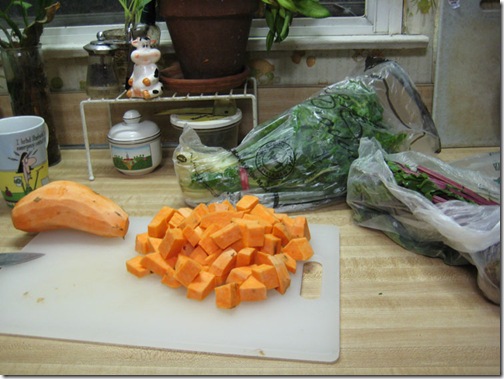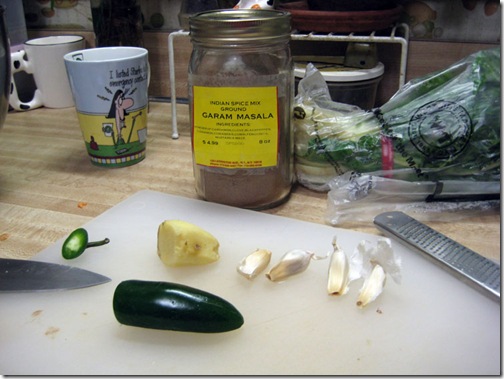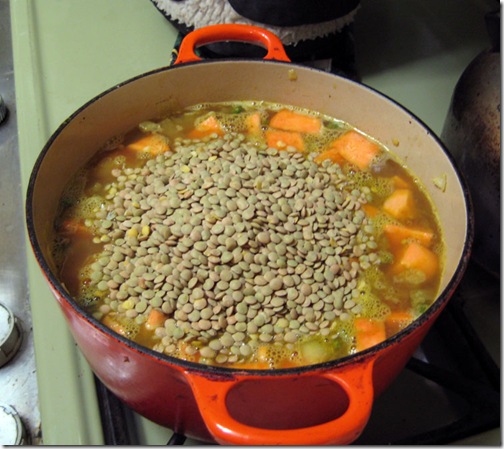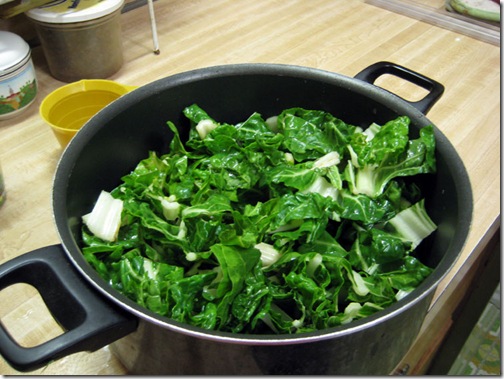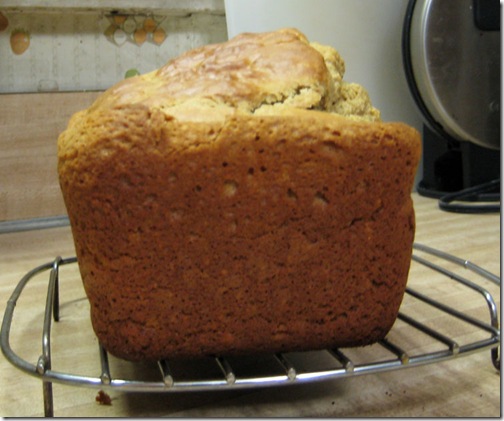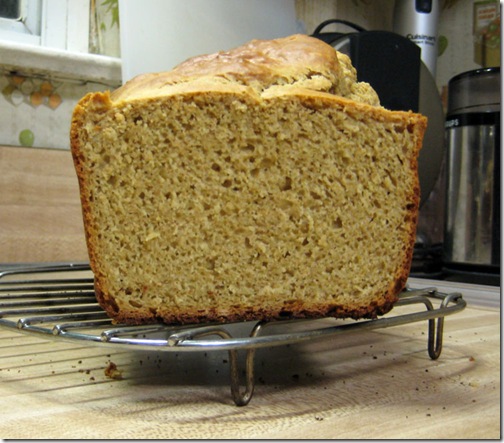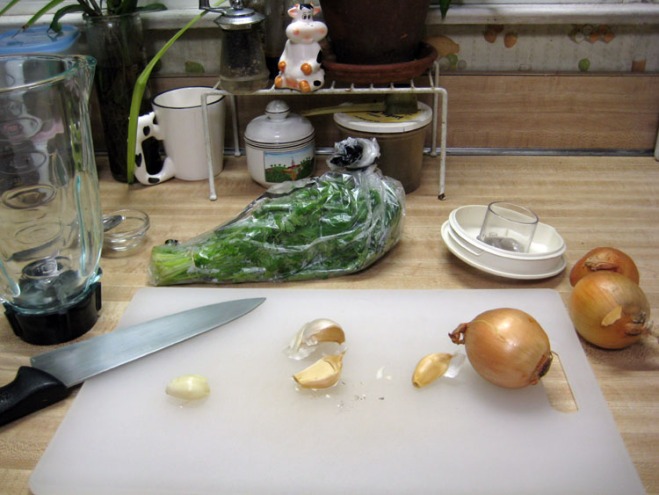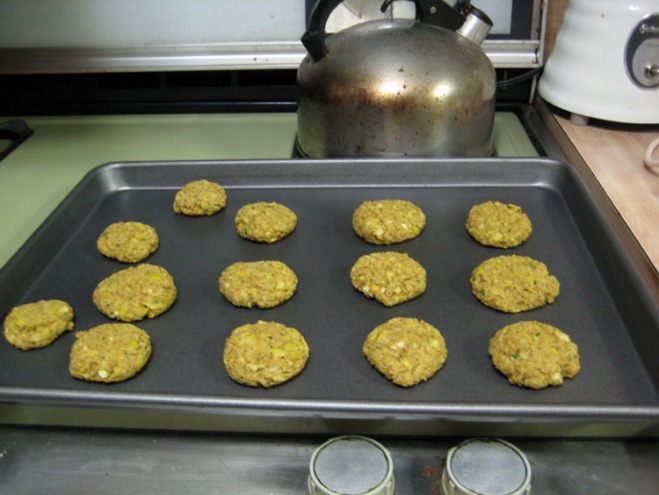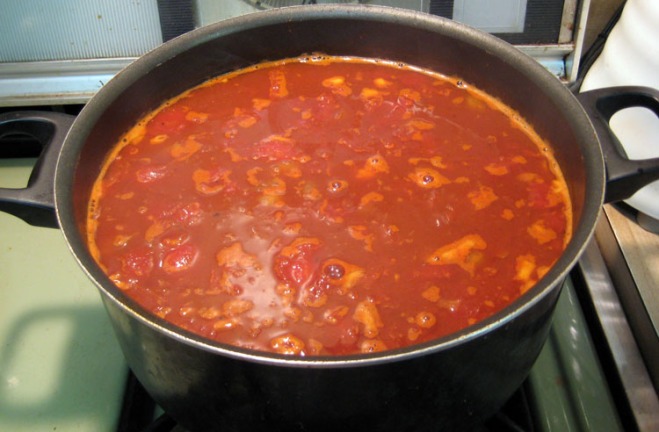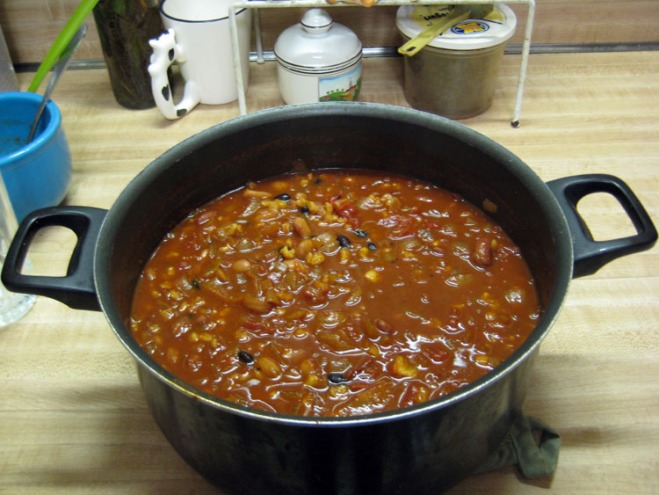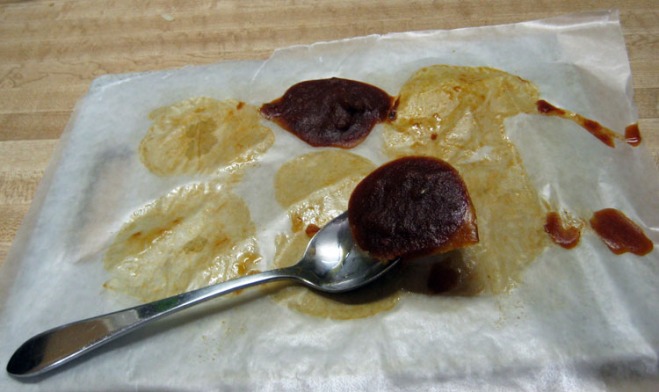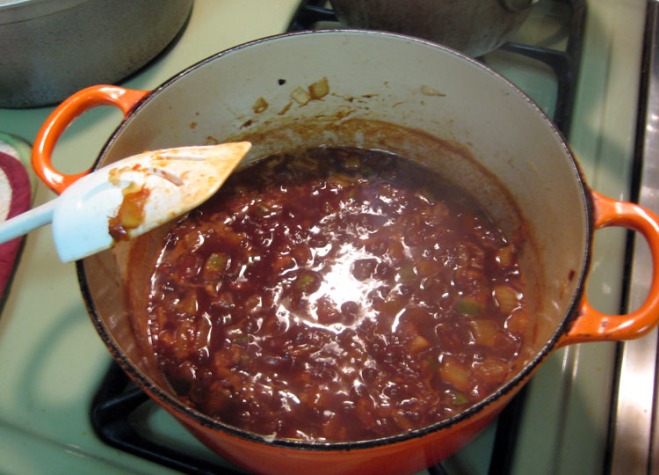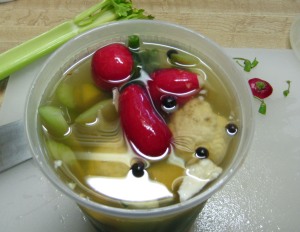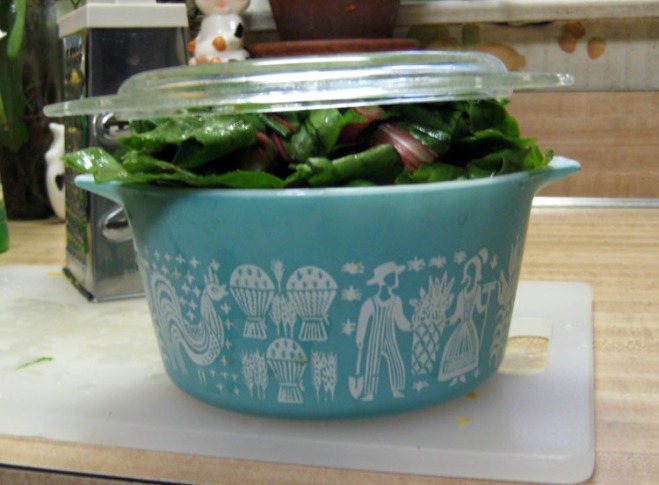I received 660 Curries as a gift last year, but didn’t make anything from it straightaway because it was August and too hot to cook. My birthday falls in that part of the New York summer when it’s hot enough long enough that it’s still 89 degrees at midnight, which can mean little use for the brand-new cookbooks except as reading material at the dining room table as I sup on salad and Cheerios (not at the same time).
But then comes fall and winter and the reminder that my office is freezing and I have a lovely little thermos and hot lunches, even on blistering summer days, isn’t a bad thing because it’s always winter at work. And so even as it starts to heat up again, it’s worth socking away a few containers of stuff to heat up.
I might have started slow when it came to this cookbook, but I’ve more than made up for it in the months since then. I’m probably down to the low 640s by now in terms of curries left to try, not counting any of the ones I’ve repeated (like this and this) more than once. Not everything has been awesome and amazing, but it’s never been less than perfectly serviceable. And that’s part of the point, I think – there are fancy curries and then there are get-home-from-work-hungry kind of curries where you look at what’s in the fridge and try to find something to do with it. And this book covers both.
The two curries I’m posting are definitely in the latter category. Especially since I *gasp* used canned chick peas, at least in part.
Amchur Chana
2 TB neutral oil (canola, etc.)
2 tspn cumin seeds, divided: 1 tspn ground, 1 tspn seeds
2 cardamom pods
1-2 cinnamon sticks
1 14.5oz can diced or crushed tomato
2 TB amchur (mango powder)
1 TB ground coriander seeds
1 tspn kosher salt
1/2 tspn lal mirch/cayenne
1/4 tspn turmeric
3 cups cooked chickpeas (2 cans is fine)
1 cup water
4 TB finely chopped cilantro, divided
1/4 cup finely chopped red onion
Heat the oil in a medium saucepan on med-high; when it’s shimmering, add cumin seeds, cardamom, and cinnamon and stir for 10-15 seconds. Don’t let the cumin burn.
Add the tomatoes, amchur, ground cumin, coriander, salt, cayenne, and turmeric. Lower the heat to medium and simmer, partially covered, for 5-10 minutes, stirring occasionally.
Add the chick peas, water, and half of the cilantro. Cover and simmer, stirring occasionally, for 20-25 minutes. The sauce should thicken up a bit.
Sprinkle remaining cilantro and onion and serve.

You can get away with the already-ground coriander if you absolutely have to, but it tastes different – and better – this way.
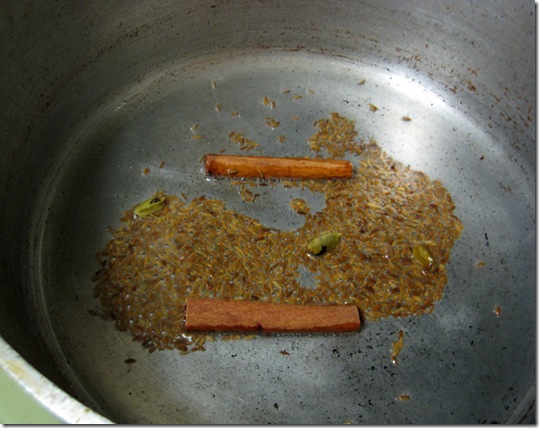
Cumin seeds in hot oil get very done very fast, which is why I don’t normally try to take pictures of it – it’ll burn by the time I get the camera ready. I was prepared this time, but it was a near thing.
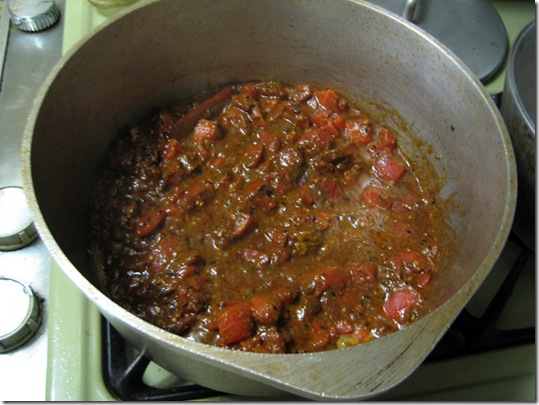
The recipe calls for crushed tomatoes and feel free to use them if you’ve got them, but I only buy diced, so that’s what I used. I buy diced because I don’t buy fresh tomatoes – I don’t eat them – and it’s the best way to simulate fresh ones when cooking. Just don’t get the kind that comes with basil or garlic or whatever else they sell.
(My dislike of raw tomatoes makes it rather ironic that I am growing a tomato plant on my back porch, but we’ll cross that bridge should I actually get tomatoes from it.)

Ready for the final simmer, which takes it from this…

… to this.
Tasty, fast, and done in less than an hour. Not a bad deal.



